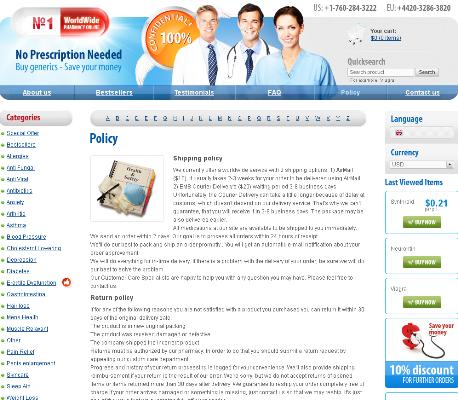Understanding How Semaglutide Supports Weight Loss
Many people are intrigued by how semaglutide encourages weight loss paired with lifestyle changes. At its core, semaglutide mimics a natural hormone called GLP-1, which helps regulate appetite and food intake. This medication communicates with the brain’s appetite-control centers, signaling fullness sooner and for longer periods. As a result, people often notice a significant reduction in their hunger, making it easier to stick to nutritious eating plans.
Semaglutide doesn’t just support feeling full—it also slows stomach emptying, which helps prevent sudden spikes and crashes in blood sugar. This dual action can lead to steady energy, fewer cravings, and enhanced motivation as the scale starts to shift.
| Action | Impact on Weight Loss |
|---|---|
| Appetite Regulation | Reduces calorie intake |
| Slows Stomach Emptying | Prolongs fullness, stabilizes blood sugar |
With these mechanisms at work, semaglutide offers powerful support for sustainable progress on your weight loss journey.
Choosing the Right Foods to Boost Semaglutide Effects

Imagine your body as an engine; semaglutide acts as premium fuel, but what you put on your plate determines how smoothly you run. Emphasize foods rich in lean protein, such as chicken, fish, tofu, and legumes. These options provide satiety, supporting the medication’s appetite-suppressing effects and helping to preserve muscle as you lose weight.
Colorful vegetables like leafy greens, carrots, and bell peppers are excellent choices. Packed with fiber and essential micronutrients, they aid digestion and keep you feeling fuller for longer. Whole grains—oats, quinoa, and brown rice—offer steady energy without the sugar spikes that can derail progress.
Healthy fats from avocado, nuts, and olive oil can enhance satisfaction from meals. Listening to your body and selecting these nutrient-dense foods forms the foundation for maximizing your outcomes with semaglutide.
Balancing Macronutrients for Steady Energy and Results
Finding the right mix of carbohydrates, proteins, and healthy fats is essential when using semaglutide in your weight loss journey. Complex carbs like whole grains and plenty of fiber-rich vegetables provide steady fuel, helping prevent energy crashes throughout the day. Lean protein sources, such as chicken, fish, and beans, support muscle maintenance and satiety.
Incorporating moderate amounts of healthy fats from sources like avocados, olive oil, and nuts not only enhances flavor but also supports hormone balance. This mindful distribution of nutrients can make meals more satisfying and sustainable.
By focusing on well-proportioned plates, you’re more likely to experience consistent energy and fewer cravings. As your body adapts to semaglutide, a balanced approach to eating empowers you to maximize results while feeling your best every day.
Managing Hunger and Cravings While on Semaglutide

Many people notice a significant decrease in appetite within the first few weeks of starting semaglutide, but occasional cravings can still sneak up, especially when old habits resurface. The key is being prepared with healthy, satisfying options that keep you aligned with your goals. Having protein-rich snacks, like Greek yogurt or hard-boiled eggs, on hand can help bridge the gap between meals and prevent impulsive choices.
Drinking plenty of water and prioritizing fiber-rich foods like vegetables, berries, and whole grains can also help you feel full for longer. It’s important to identify triggers—such as stress or boredom—that often lead to mindless snacking. Developing new routines, like going for a quick walk or practicing deep breathing, can help redirect your focus during moments of temptation.
Remember that progress is not about perfection, but about making consistent, mindful choices. By learning to recognize and honor true hunger cues, you can work with semaglutide’s hunger-reducing benefits and maintain a healthier relationship with food.
Practical Meal Planning Tips for Lasting Success
Meal planning doesn’t have to be overwhelming, especially when you’re using semaglutide to support your weight loss journey. Begin by creating a weekly menu that emphasizes whole foods and minimizes processed options. Prioritize lean proteins, fiber-rich vegetables, and healthy fats to promote satiety and nourish your body. Prep meals in advance by chopping vegetables or portioning snacks, making healthy choices more convenient. Staying organized and prepared helps you avoid last-minute temptations and ensures you consistently support your goals.
| Meal Prep Tip | Benefit |
|---|---|
| Batch cook proteins | Saves time and ensures balanced meals |
| Pre-wash and chop vegetables | Increases veggie intake and convenience |
| Portion healthy snacks | Reduces impulse eating and supports semaglutide regimen |
Tracking Progress and Adjusting Your Diet Strategically
As you embark on your semaglutide journey, keeping a journal or using a tracking app can make a real difference. Documenting meals, hunger levels, and physical changes allows you to spot patterns and celebrate small victories. Be honest and consistent, as this data will become invaluable for seeing what truly works for you.
If you notice plateaus or shifts in your energy, don’t panic—these are natural. Use your records to pinpoint dietary habits that need tweaking. Maybe certain foods aren’t as satisfying or a macronutrient balance needs adjusting.
Remember, your body is dynamic, and progress isn’t always linear. Regularly reviewing your food choices and results helps you adjust your plan thoughtfully. Checking in with your healthcare provider can also provide extra guidance to keep you on track toward your weight loss goals.



